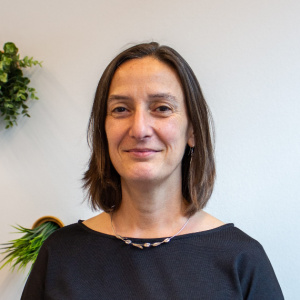Sara Pellegrini
 STMircoelectronics and Panel Member of QEPNT’s Independent Advisory Board
STMircoelectronics and Panel Member of QEPNT’s Independent Advisory Board
Sara Pellegrini is Imaging Communication and Academic Collaborations Manager in the Imaging subgroup within ST’s Analog, MEMS and Sensors Group at STMicroelectronics and has held this position since July 2023.
Give a little background on your career and how it led to your current role.
Before joining ST, I did a master’s degree in Electronics at Politecnico di Milano and then a PhD in Physics at Heriot-Watt University, where I studied Single Photon Avalanche Diodes (SPADs) in InGaAs/InP.
I joined ST as Characterization and Modelling Engineer in 2006 and progressed to the role of Technology Manager and later to Advanced Photonics Pixel Architect. In this role, I led the advanced photonics sensor technology development, working in close collaboration with the silicon, process, module, and system R&D teams to define and develop ST’s imaging photonics pixel roadmap and specification.
Following this very technical career, I decided to take a more transversal role in the Imaging Subgroup. In my current role as a communication manager, I define the communication strategy for the Imaging subgroup to ensure the delivery of a coherent message on ST's Imaging subgroup vision internally and externally to ST, with particular emphasis on scientific conferences. Moreover, as the academic collaborations manager, I coordinate all academic collaborations within the subgroup and the full PhD portfolio, ensuring alignment with ST’s vision and strategy with a focus on imaging related topics.
Why is gender equality important in STEM?
STEM is underpinning everything we use daily and all the infrastructure that is providing us the quality of life we have today. To make all the technology serving our society more relevant to a society made up of both men and women, it is important to have a good balance of viewpoints at the creation, execution and delivery stage. Today the STEM industry and academia are heavily dominated by men because of the strong cultural bias of the society we live in. To address all the future challenges in STEM, we need a more diverse way of thinking, therefore aiming for gender equality is key, and we need to start early on from the young children and their families.
What interested you in quantum?
I did my PhD on quantum technologies, developing a single photon detector based on SPAD technology. Now, STMicroelectronics is one of few foundries capable of manufacturing SPADs, which are one of the key sensors capable of single photon detection. This technology underpins several quantum-based systems such as LiDAR and will allow for a further improvement in navigation through a precise measurement and reproduction of the surrounding environment.
What transferrable skills do you think are the most important skills for a career in STEM?
Creativity, curiosity and communication are the most important skills for a career in STEM. Curiosity pushes you to always look for what’s behind the working of things and what’s around the corner. Creativity makes you come up with new solutions to problems, which is something that STEM people do all the time. Communication is used constantly to explain what you are working on and how you got there: it is the building block of any team.
What advice would you give to young people who hope to pursue a career in STEM?
If you have seen something you like doing among the topics you are studying at school, pursue it and you will succeed. If you can identify your aim, it’s going to give you the motivation to go towards it even when you encounter some obstacles. Companies offer internships to students, so it’s worth applying for such opportunities to see if what they offer is truly aligned with your expectations, and that way you can refocus your aim towards what it is that you truly like.
There is no reason why you couldn’t pursue a career in STEM. There are now also opportunities as apprenticeships that allow you to join a company and continue studying, which gives you more flexibility.

